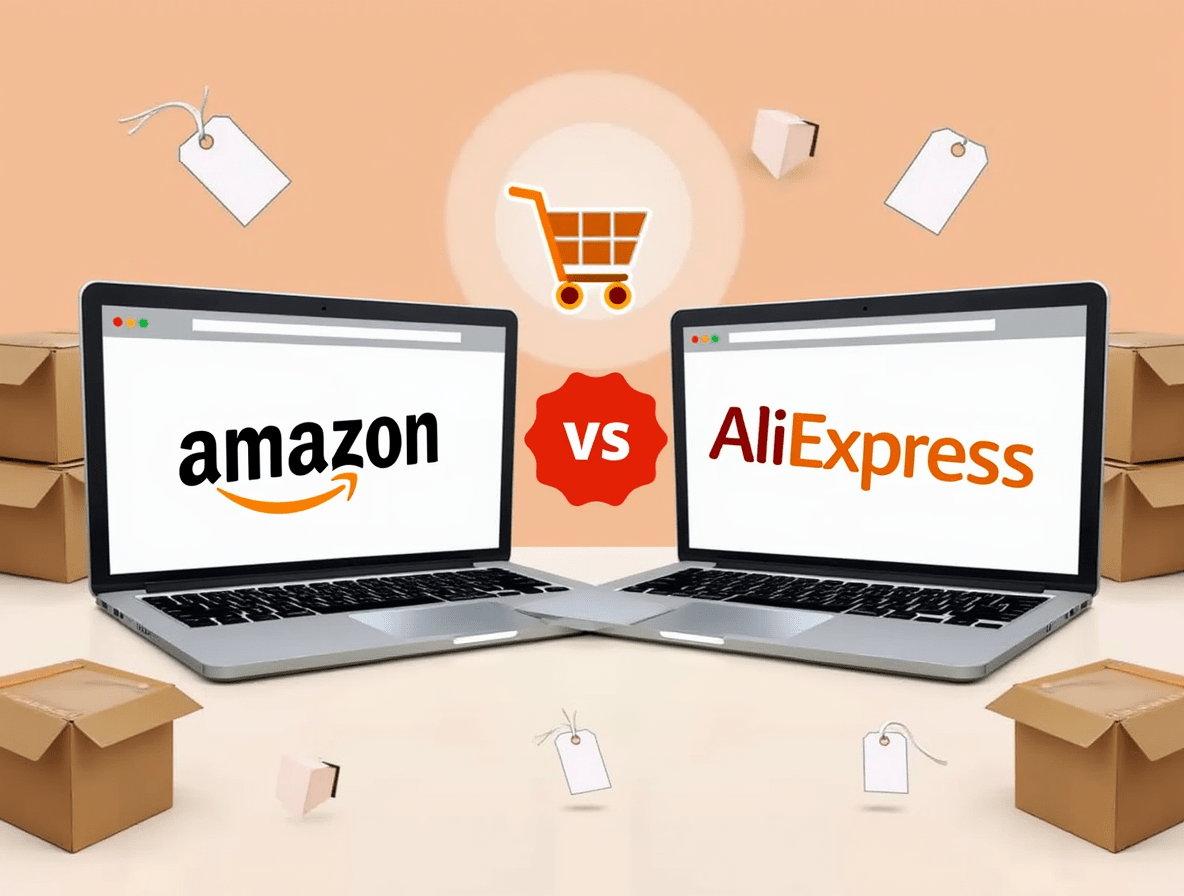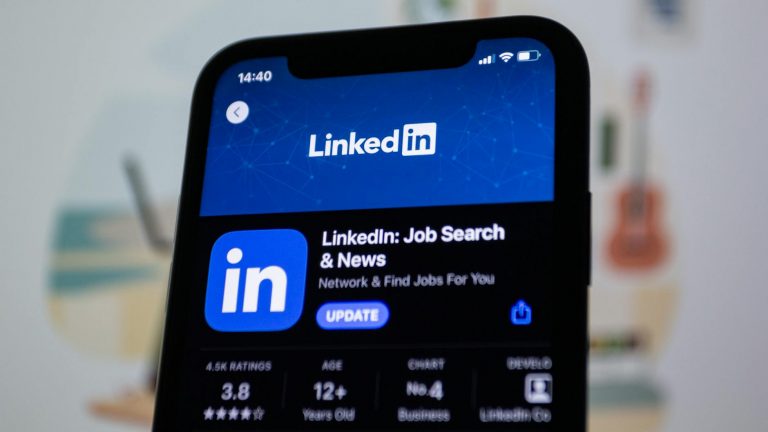
AliExpress vs. Amazon: The Ultimate Marketplace Showdown for Smart Shoppers
Did you know that while Amazon processes over 1.6 million packages per day, AliExpress connects shoppers directly with more than 200,000 Chinese manufacturers and suppliers? In today’s global marketplace, consumers face a crucial decision when shopping online: choose the convenience and speed of Amazon or the potentially lower prices of AliExpress.
This dilemma becomes particularly challenging when price differences can be substantial, but concerns about product quality, shipping times, and customer protection create uncertainty. Many shoppers find themselves wondering if the significant savings on AliExpress justify the longer wait times and potential quality variations, or if Amazon’s premium is worth paying for peace of mind.
This comprehensive comparison will help you navigate the strengths and weaknesses of both platforms across multiple shopping categories. You’ll discover when AliExpress offers genuine value and when Amazon’s premium services justify the higher price point. By the end of this analysis, you’ll have a clear framework for deciding which marketplace better suits your specific shopping needs.
Platform Backgrounds: Understanding the Key Differences
What is AliExpress?
AliExpress launched in 2010 as an international retail extension of Alibaba Group, the Chinese e-commerce giant. Unlike Amazon’s centralized approach, AliExpress operates as a marketplace that:
- Connects international buyers directly with Chinese manufacturers and wholesalers
- Specializes in providing factory-direct pricing without traditional retail markups
- Focuses primarily on consumer goods, electronics, apparel, and home products
- Allows sellers to ship directly to consumers worldwide
- Operates with minimal inventory oversight or standardization
This direct-from-manufacturer model explains both AliExpress’s price advantages and some of its inherent challenges regarding consistency and shipping speeds.
What is Amazon?
Amazon, founded in 1994, has evolved from an online bookstore into the world’s largest e-commerce platform with a multifaceted approach:
- Operates both as a direct retailer and third-party marketplace
- Maintains extensive warehouse networks and logistics systems
- Enforces standardized seller policies and performance metrics
- Integrates with subscription services like Prime for enhanced customer benefits
- Emphasizes fast shipping and streamlined customer experience
Amazon’s infrastructure-heavy approach creates higher operational costs that influence pricing but enable faster fulfillment and more consistent customer experiences.
E-commerce analyst Maria Chen explains: “The fundamental difference lies in their business models. Amazon invests heavily in infrastructure to control the customer experience, while AliExpress prioritizes connecting buyers directly with manufacturers to minimize costs. These approaches create distinct advantages and trade-offs for shoppers.”
Price Comparison: Understanding the Value Equation
AliExpress Pricing Structure
AliExpress typically offers significantly lower prices due to:
- Direct factory sourcing without retail middlemen
- Lower labor and production costs in China
- Minimal marketing expenses passed on to consumers
- Competitive seller environment with transparent price comparison
- Bulk manufacturing economics, even for single-item purchases
Price savings on AliExpress commonly range from 30-80% compared to traditional retail, with the largest differentials in categories like electronics accessories, fashion items, and home décor.
Amazon Pricing Structure
Amazon’s pricing reflects its business model’s additional costs:
- Warehouse storage and logistics expenses
- Fast shipping infrastructure investments
- Marketplace quality control and customer service
- Marketing and platform development costs
- Seller fees that get factored into pricing
While generally higher than AliExpress, Amazon prices benefit from competitive pressure between sellers and Amazon’s own retail operations, often resulting in better values than traditional brick-and-mortar retail.
Consumer researcher Thomas Wilson notes: “Our analysis of 500 identical or highly similar products showed AliExpress averaged 52% cheaper than Amazon across categories. However, when factoring in shipping times and product quality variation, the value proposition becomes more nuanced for time-sensitive or quality-critical purchases.”
Shipping and Delivery Comparison
AliExpress Shipping Experience
AliExpress shipping involves:
- Standard delivery times of 15-45 days for free or low-cost shipping options
- Premium shipping options (AliExpress Standard Shipping, ePacket) with 7-20 day timeframes
- Tracking available but often with less detailed updates
- Direct shipping from individual sellers rather than centralized warehouses
- Potential customs delays and import duties in some countries
- No subscription option for expedited shipping across the platform
The longest shipping times typically occur with the lowest-priced items using basic shipping methods, creating a direct correlation between price paid and delivery speed.
Amazon Shipping Experience
Amazon’s shipping infrastructure delivers:
- Standard delivery in 3-5 business days for non-Prime items
- Prime delivery in 1-2 days in most major markets
- Same-day and next-day options in many metropolitan areas
- Consolidated fulfillment from regional distribution centers
- Detailed tracking with precise delivery windows
- Consistent experience across most marketplace sellers
The Amazon Prime subscription ($139/year) dramatically enhances shipping value for frequent shoppers by eliminating per-order shipping costs while providing faster delivery.
Logistics expert James Peterson observes: “The platforms operate on fundamentally different shipping philosophies. Amazon’s model is built around minimizing wait times through infrastructure investment, while AliExpress accepts longer delivery windows as a trade-off for lower prices. For consumers, this creates a clear choice between price optimization and time sensitivity.”
Product Quality and Authenticity
AliExpress Quality Considerations
Shopping on AliExpress requires understanding:
- Wider quality variation between sellers and products
- Limited standardization or quality control oversight
- Prevalence of unbranded, generic, and “inspired by” items
- Importance of carefully reviewing seller ratings and reviews
- Photos may not always accurately represent actual products
- Factory-direct items that may be identical to branded versions
- Some counterfeit risks in branded categories
The platform tends to excel with unbranded functional items like electronics accessories, basic household goods, and trending products, where manufacturing quality rather than brand value determines satisfaction.
Amazon Quality Considerations
Amazon’s approach to quality includes:
- More consistent product standards through seller performance metrics
- Amazon’s own quality control for first-party retail items
- Stricter policies against counterfeit merchandise
- Greater presence of major brands and official products
- More reliable product information and specifications
- Better product photography and detail consistency
- Segregated “Amazon’s Choice” and “Best Seller” designations
While Amazon has faced its own counterfeit challenges in certain categories, its reactive policies and buyer protection create stronger accountability for sellers.
Product quality researcher Sophia Martinez explains: “Our blind testing of identical products from both platforms showed meaningful quality differences in about 30% of cases, with Amazon’s versions typically showing better finish, durability, and consistency. However, in 70% of cases, the items were effectively identical despite significant price differences.”
Customer Service and Buyer Protection
AliExpress Buyer Protection
AliExpress protects buyers through:
- Money-back guarantee if items don’t arrive
- Full or partial refunds for items not as described
- Dispute resolution system favoring buyers
- 60-day buyer protection period (recently extended from 15 days)
- Seller ratings and detailed review systems
- Basic customer service through chat support
- No return shipping cost coverage in most cases
The platform’s dispute resolution typically favors buyers but often involves a more involved process and longer resolution timeline than Amazon.
Amazon Customer Service
Amazon’s approach to customer protection includes:
- A-to-z Guarantee covering third-party marketplace purchases
- Standardized return policies (typically 30 days)
- Immediate refunds for many return scenarios
- 24/7 customer service via chat, phone, and email
- Straightforward return process with prepaid shipping labels
- Extensive seller performance requirements
- Quick resolution of most customer issues
Amazon’s customer service infrastructure represents a significant portion of its higher operational costs but delivers a more consistent and accessible support experience.
Consumer advocate Jennifer Thomas notes: “The fundamental difference is one of process versus outcome. Both platforms ultimately protect buyers from significant loss, but Amazon’s approach emphasizes prevention and quick resolution, while AliExpress focuses on remediation after issues arise. For less experienced online shoppers, Amazon’s approach often provides greater confidence.”
When to Choose Each Platform: Category-Specific Recommendations
Best Categories for AliExpress
AliExpress typically offers better value when shopping for:
Electronic Accessories & Components
- Phone cases (60-80% savings)
- Cables and adapters (70-85% savings)
- LED lights and simple electronics (50-75% savings)
- Computer peripherals (40-60% savings)
Home Décor & Non-Essential Items
- Decorative items (65-80% savings)
- Art supplies (50-70% savings)
- Gardening accessories (55-75% savings)
- Party supplies and seasonal decorations (60-85% savings)
Fashion & Accessories
- Trend-based items not needed long-term (50-80% savings)
- Jewelry and accessories (70-90% savings)
- Sunglasses and non-prescription eyewear (60-85% savings)
- Fabric and crafting materials (50-70% savings)
Specialty Niche Products
- Cosplay and costume components (60-80% savings)
- Hobby-specific tools and accessories (50-70% savings)
- Custom or personalized items (40-60% savings)
For these categories, the quality-to-price ratio often favors AliExpress if you can accommodate longer shipping times.
Best Categories for Amazon
Amazon typically offers better value when purchasing:
Time-Sensitive Purchases
- Gifts with specific delivery deadlines
- Replacement items needed quickly
- Seasonal products needed for upcoming events
- Emergency purchases
Complex Electronics & Appliances
- Laptops, tablets, and smartphones
- Kitchen appliances and home electronics
- Photography and video equipment
- Products where warranty and support matter
Health, Beauty & Consumables
- Vitamins and supplements
- Skincare and cosmetics
- Food products and perishables
- Items applied directly to skin or consumed
High-Value or Investment Items
- Furniture and major home goods
- Premium audio equipment
- Branded fashion with authenticity concerns
- Products where returns might be necessary
For these categories, Amazon’s quality consistency, shipping speed, and customer protection justify the premium pricing.
Advanced Shopping Strategies for Each Platform
Maximizing Value on AliExpress
Experienced AliExpress shoppers recommend:
- Check seller metrics carefully: Focus on stores with 95%+ positive feedback and at least two years of operation
- Compare identical products across sellers: Prices can vary dramatically for the same item
- Use image search: Find the same products listed by multiple sellers to compare pricing
- Understand shipping method trade-offs: Balance cost savings against delivery timeframes
- Plan seasonal purchases well in advance: Order holiday items 2-3 months ahead
- Take advantage of sales events: 11.11 (Singles Day) and Anniversary Sale offer deepest discounts
- Use AliExpress coupons and coins: Stack savings methods for maximum discounts
- Check product reviews with photos: Verify actual product appearance and quality
Consumer product blogger Michael Chen advises: “I approach AliExpress with a ‘planned discovery’ mindset. I browse regularly for non-urgent items I might need in the future, place orders well ahead of when I’ll need them, and treat fast delivery as a pleasant surprise rather than an expectation.”
Maximizing Value on Amazon
Amazon shopping strategies include:
- Leverage Subscribe & Save: Get 5-15% off regularly purchased items
- Watch for Lightning Deals and Deals of the Day: Brief price drops on specific items
- Use CamelCamelCamel or similar price trackers: Monitor price history before purchasing
- Consider Amazon Warehouse for open-box discounts: Save on items with damaged packaging
- Explore Amazon Basics and Amazon Essentials lines: Often good quality at lower prices
- Combine Prime benefits beyond shipping: Photos, video, music to maximize membership value
- Use Amazon’s wish list price monitoring: Get notified of price drops on saved items
- Check the “Other Sellers on Amazon” box: Sometimes find lower prices for identical items
E-commerce expert Sarah Johnson recommends: “Think of Prime membership cost as prepaid shipping that needs to deliver sufficient value. If you order at least 25-30 items annually, the membership typically pays for itself while providing substantially faster delivery than even paid shipping options on AliExpress.”
Expert Insights: Platform Strengths and Weaknesses
According to e-commerce consultant Robert Williams: “Both platforms excel by fully committing to their core value propositions. Amazon invests billions in infrastructure to deliver convenience and reliability, while AliExpress has optimized its model to connect consumers directly with manufacturers at the lowest possible prices. Neither approach is inherently superior—they serve different shopping priorities.”
Technology reviewer Emily Zhang adds: “The platforms have been converging gradually. AliExpress has improved shipping times and buyer protection, while Amazon has expanded its third-party marketplace with more international sellers. However, fundamental differences remain in their business models that create distinct shopping experiences.”
Conclusion: Making Your Decision
The optimal choice between AliExpress and Amazon isn’t universal but depends on your specific shopping priorities, item categories, and timeframes. AliExpress offers substantial cost savings that make it ideal for non-urgent purchases, trend-based items, and categories where brand names add little functional value. Amazon delivers superior convenience, consistency, and support that justify its premium pricing for time-sensitive needs, complex products, and items where quality assurance matters most.
Many savvy shoppers maintain accounts on both platforms, strategically directing purchases to each based on:
- How urgently they need the item
- The complexity and quality-sensitivity of the product
- Their comfort level with potential product variations
- The significance of potential cost savings
- Whether they value brand authenticity for that specific category
By understanding each platform’s structural advantages and limitations, you can make informed decisions that optimize both your budget and shopping experience. The key is aligning each purchase with the platform whose strengths match your priorities for that specific item.
Frequently Asked Questions
Is it safe to use credit cards on AliExpress? Yes, AliExpress uses standard payment security protocols and offers buyer protection. However, many users prefer to pay through PayPal or credit cards with strong fraud protection for additional security.
Why are prices so much lower on AliExpress? AliExpress connects you directly with manufacturers, eliminating multiple middlemen in the traditional retail supply chain. Additionally, manufacturing costs in China are lower, and the platform has minimal infrastructure costs compared to Amazon.
How can I spot fake reviews on either platform? Look for verified purchase labels, check reviewer history for suspicious patterns (only 5-star reviews across many unrelated products), and prioritize detailed reviews with photos. Amazon’s “Verified Purchase” system is generally more reliable than AliExpress’s review verification.
Can I find the same products on both platforms? Often yes, though with different branding. Many AliExpress products are unbranded versions of items sold under various brand names on Amazon, sometimes from the same factories.
What about customs and import taxes? Both platforms may incur import duties depending on your country and the purchase value. Amazon typically builds these costs into displayed prices for international shipments, while AliExpress purchases might result in separate customs bills upon delivery.
Which platform better protects my personal data? Both platforms collect significant user data, but Amazon operates under stricter privacy regulations in most Western markets. If data privacy is a primary concern, Amazon generally provides more transparent policies and stronger protections.














